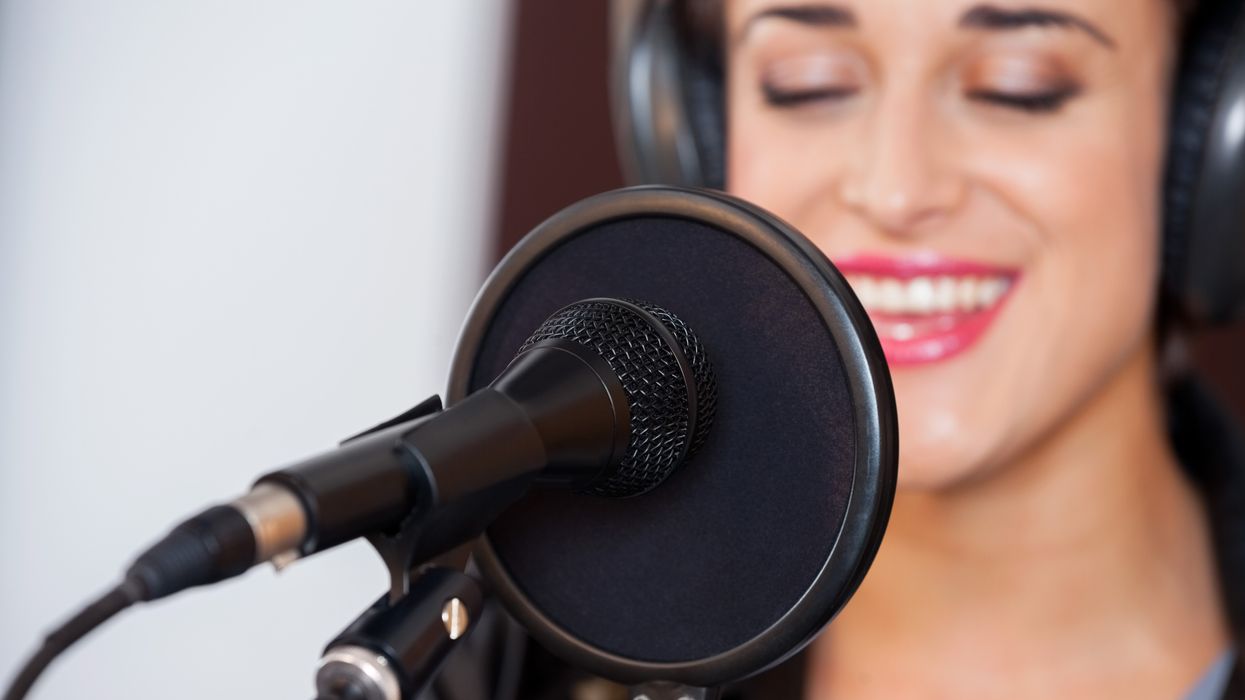Best Mic Placements for Voiceovers
What works for dialogue on set is completely wrong for voiceover. Here’s why.

We talked about what ADR is and why it's important this week. Now let's talk about voiceovers. Nothing ruins a video like amateur sound work. At the top of the clock in amateur-hour? Bad voiceover!
Maybe you’re setting up a session for your talent to give a zesty performance the likes of Alicia Silverstone’s iconic Clueless narration. Or maybe you’re turning the mic on yourself for one of those breathy Terrence Malick Tree of Life VO stylings. One thing is the same for all voiceover: point the mic right.
In a Sound 101 breakdown, the guys over at Deity have some tips on the best placement for voiceover, when to use (or ditch) windscreens and foam covers, recording foley, and what kind of budget you’re looking at for a decent recording setup.
We'll look at their tips and add a few extra pointers below.
The main difference between booming a scene and recording voiceover
As the Deity team points out, when you’re on set, you’re probably pointing a boom mic at whoever is speaking. If you’re doing that right, you’re pointing the mic at the talent’s mouth but also the solar plexus, which is the chest area. That’s what will give you the most rounded sound.
With voiceover, forget the plexus and point the mic straight at the mouth.

Voiceovers should embrace the "proximity effect"
Any good voiceover will do one key thing: make you feel like the person speaking is so close to you, they might as well be speaking from inside your mind. (That’s the goal in filmmaking, right?) When the speaker is closer to the microphone, there is an added bass response that we associate with that full, velvety voiceover quality.
Shotgun mics can be great for voiceovers because they let you get up close and personal with your mic. As the Deity team points out, this is something that voiceover pro Mike DelGaudio of Booth Junkie can explain. (He is a professional VO artist who records for the likes of the New York Times.) Here’s one version of his setup.
When to use windscreens or pop filters, and when to lose them
The drawback of being up close and personal? Plosives.
In English, the offending sounds that throw off your voiceovers with their rude plosivity are t, k, and p (voiceless) and d, g, and b.
When recording voiceover, any foam windscreen or a pop filter can help reign these sounds in.
But as the Deity team points out, if you don’t care about plosives, lose the foam as the more naked your mic, the better it will sound because it will not be cutting out any minute frequencies.
When do you want foam? When you’re booming on set. If you are cueing (moving the mic to follow the action) you will be catching small amounts of air, which will create undesirable sounds if there’s no windscreen.
Exceptions for VO mic placement? Dialogue ADR
The catch to the point-at-your-mouth-from-close-proximity directive is if you are recording ADR. With ADR where you are replacing or adding dialogue recorded on set, you will want to match the way the rest of the sound in a scene was recorded. Most likely, the actors had a boom mic following them, and so your ADR will want to model the placement of that boom mic.
It can be very obvious (albeit hilarious) when films edit with ADR that was clearly recorded in a sound studio with a completely different mic placement. Some of the best films of the 1970s do it!
Check out the full Sound 101 video for more tips on recording foley, including some great Kung Fu production techniques, and the recommended $500 buy-in on a home recording audio setup.
Need help actually writing and performing decent voiceovers?
We will leave you with this cool essay on one of the biggest purveyors of fine voiceover, Terrence Malick. I personally like his earliest voiceovers the best!
If you have any other tips on mic placement or other VO tips, please share them in the comments.
Source: Deity

 Richard Gere and Uma Thurman in 'Oh, Canada' via Kino Lorber
Richard Gere and Uma Thurman in 'Oh, Canada' via Kino Lorber  Uma Thurman in 'Oh, Canada'via Kino Lorber
Uma Thurman in 'Oh, Canada'via Kino Lorber 









